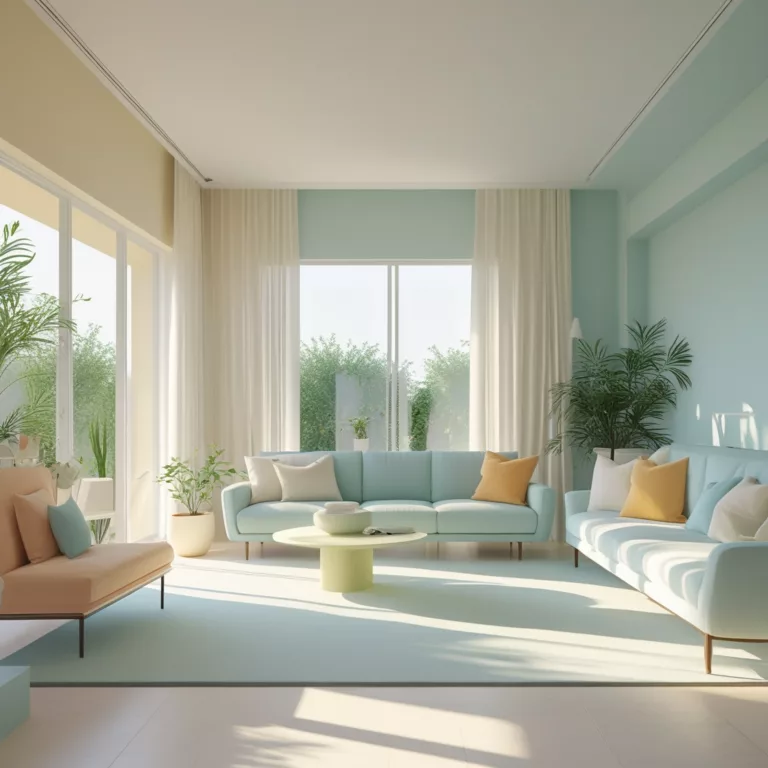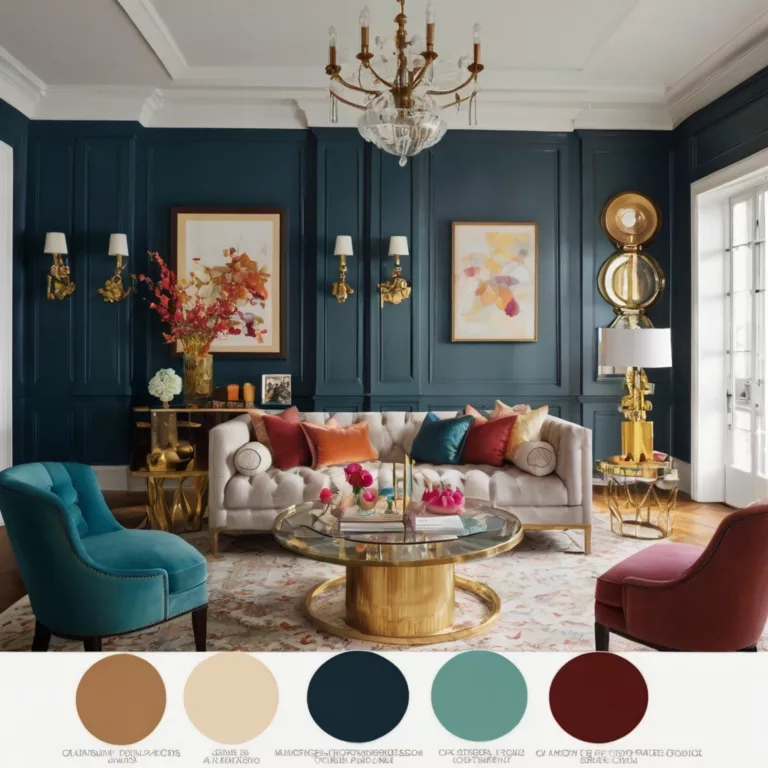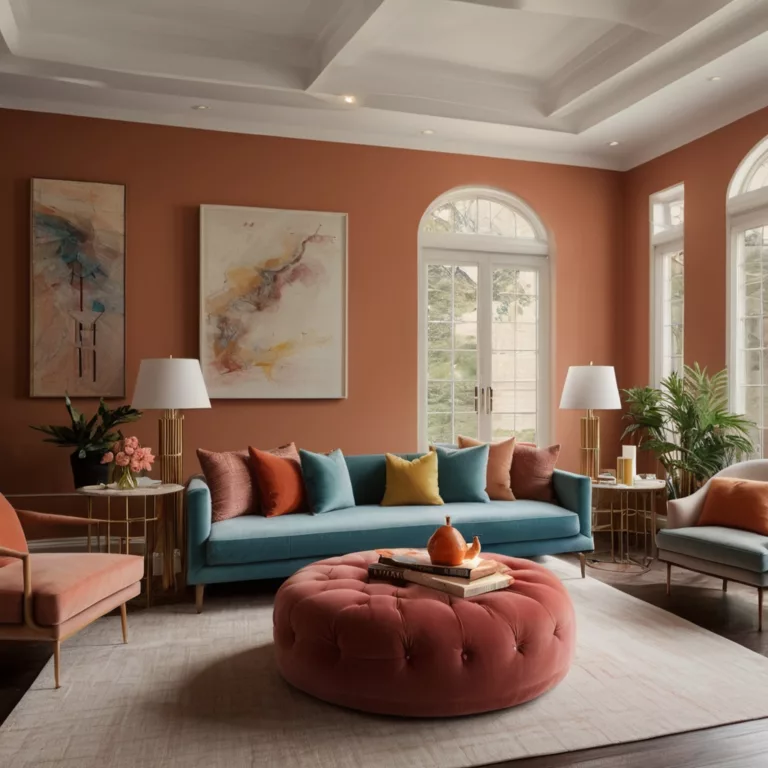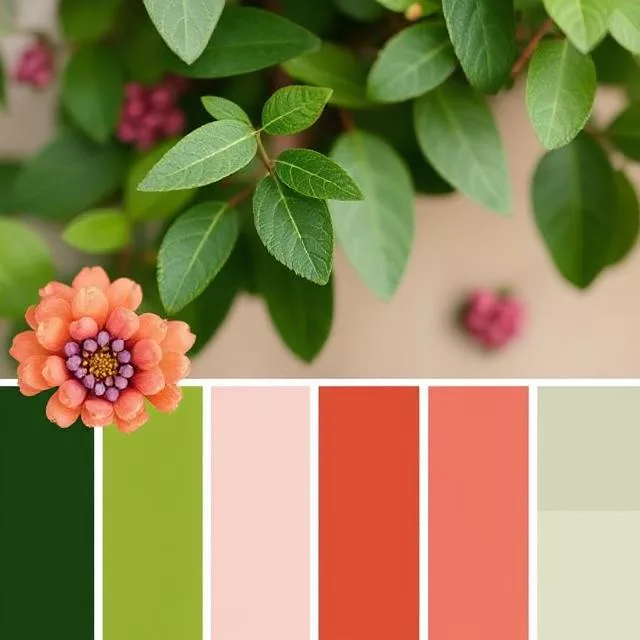Home Paints
Home Paints Paints are considered one of the most important elements in home design and renovation, as they play a major role in determining the overall appearance of interior and exterior spaces.
History of Paints
Historical Overview of Paint Development
The use of paints began in prehistoric times, where ancient humans used natural dyes extracted from plants, minerals, and animals to draw murals in caves and decorate buildings. Over time, the paint industry has developed significantly:
- Ancient Times: Ancient Egyptians, Greeks, and Romans used materials such as lime and natural oils to make paints.
- Middle Ages: New methods were developed to fix colors using different mediums such as oils and eggs.
- Renaissance: Witnessed great development in painting techniques and compositions.
- Industrial Revolution: Commercial paint manufacturing began and the first paint factories appeared.
- Twentieth Century: Witnessed a revolution in paint manufacturing with the discovery of polymers and modern chemical compounds.
- Modern Era: The emergence of environmentally friendly paints, smart paints, and nano paints.
Types of Home Paints
1. By Base Type
A. Water-based Paints
Water-based paints are among the most widely used types of paints in homes for several reasons:
- Advantages:
- Quick drying (1-3 hours)
- Low odor
- Easy to clean with soap and water
- Low environmental impact due to low Volatile Organic Compounds (VOCs)
- Resistant to yellowing over time
- Ease of application
- Disadvantages:
- Less durable compared to oil-based paints
- May require more coats for full coverage
- Not suitable for all surfaces
- Subtypes:
- Acrylic paints
- Latex paints
- Vinyl paints
B. Oil-based Paints
Use oils as a primary medium and feature unique properties:
- Advantages:
- High durability
- Scratch and friction resistant
- More sustainable gloss
- Excellent surface coverage
- Moisture resistant
- Disadvantages:
- Slow drying (24-48 hours)
- Strong odor
- Contains high levels of Volatile Organic Compounds
- Requires special solvents for cleaning
- Tends to yellow over time
- Subtypes:
- Alkyd paints
- Natural oil paints
- Enamel paints
2. By Finish
A. Flat/Matte Paints
- Light reflection percentage: 0-10%
- Ideal Uses: Ceilings, walls with defects, bedrooms, low-traffic areas
- Advantages: Hides defects, elegant appearance, easy partial repair
- Disadvantages: Difficult to clean, less resistant to stains
B. Eggshell Paints
- Light reflection percentage: 10-25%
- Ideal Uses: Living rooms, dining rooms, hallways
- Advantages: Relatively easy to clean, elegant appearance, conceals defects to a reasonable degree
- Disadvantages: Slightly reflects light which may reveal some defects
C. Satin Paints
- Light reflection percentage: 25-35%
- Ideal Uses: Bathrooms, kitchens, children’s rooms, window frames
- Advantages: Easy to clean, moisture resistant, medium gloss
- Disadvantages: Shows painting defects and surface irregularities
D. Semi-Gloss Paints
- Light reflection percentage: 35-70%
- Ideal Uses: Kitchens, bathrooms, doors, windows, cabinets
- Advantages: Resistant to moisture and stains, high cleanability, good durability
- Disadvantages: Clearly shows surface defects
E. High-Gloss Paints
- Light reflection percentage: 70-90%
- Ideal Uses: Doors, windows, furniture, architectural details, exterior works
- Advantages: Excellent durability, easy to clean, resistant to moisture and stains
- Disadvantages: Shows all surface defects, requires precise surface preparation before painting
3. By Use
A. Interior Paints
Specifically designed for use inside homes with a focus on:
- Low levels of Volatile Organic Compounds
- Stain resistance
- Cleanability
- Fade resistance
- Less prone to cracking and peeling internally
B. Exterior Paints
Designed to withstand harsh weather conditions:
- UV resistance
- Mold and fungus resistance
- Rain and moisture resistance
- Peeling, cracking, and brittleness resistance
- Greater flexibility for expansion and contraction with temperature changes
C. All-Purpose Paints
Combine the characteristics of interior and exterior paints:
- Suitable for indoor and outdoor use
- Good durability
- Reasonable resistance to weather conditions
- Less specialized than the previous two types
4. Specialized Types of Paints
A. Heat-Resistant Paints
- Withstand high temperatures
- Used for heaters, ovens, stoves
- Prevent peeling and deformation due to heat
B. Water-Resistant Paints
- Form a water-resistant layer
- Ideal for bathrooms, kitchens, and exterior surfaces
- Prevent water leakage and mold formation
C. Anti-Bacterial Paints
- Contain antimicrobial agents
- Prevent the growth of bacteria and fungi
- Ideal for hospitals, nurseries, and kitchens
D. Heat-Reflective Paints
- Reflect sunlight
- Reduce heat absorption
- Save on energy consumption
E. Chalkboard Paints
- Transform any surface into a chalkboard that can be written on with chalk
- Popular in children’s rooms, kitchens, and creative workspaces
F. Magnetic Paints
- Contain metal particles that attract magnets
- Can be used under another layer of regular paint
G. Glow-in-the-Dark Paints
- Absorb light and emit it in the dark
- Used in children’s room decor and hallways
Composition of Home Paints
Basic Components of Paints
1. Vehicle
- Solvent/Thinner: Water in water-based paints, or organic solvents in oil-based paints.
- Binder: The material that binds pigment particles together and adheres to the surface (such as acrylic, polyurethane, alkyd).
2. Pigments
- Primary Pigments: Give the paint its basic color and coverage ability.
- Secondary Pigments: Enhance certain properties such as UV resistance.
3. Additives
- Anti-foaming agents: Prevent bubble formation during application.
- Stabilizers: Improve stability and long-term storage.
- Anti-freeze agents: Prevent freezing of water-based paints.
- Driers: Speed up the drying process.
- Anti-mold and fungus agents: Prevent mold growth.
- Anti-settling agents: Prevent pigment settling.
Chemical Composition and Its Effect on Performance
Effect of Solid-to-Liquid Ratio
- High solid ratio: Better coverage, greater durability, higher price.
- Low solid ratio: Less coverage, ease of application, lower price.
Effect of Binder (Polymer) Type
- Acrylic: Good flexibility, UV resistance, color stability.
- Alkyd: High hardness, excellent gloss, but tends to yellow.
- Polyurethane: Excellent chemical resistance, exceptional durability.
- Epoxy: Corrosion and chemical resistance, high hardness.
Process of Selecting Appropriate Paints for Home
Determining Project Needs
1. Room and Usage Assessment
- Traffic Level: High-traffic rooms require more durable paints.
- Humidity Level: Humid rooms require moisture and mold-resistant paints.
- Lighting: Low-light rooms benefit from light colors and reflective paints.
- Function: Determining the primary use of the room to choose the appropriate type.
2. Surface Assessment
- Material Type: Wood, gypsum, concrete, metal, plastic.
- Surface Condition: New, previously painted, damaged, contaminated.
- Surface Porosity: Determines the appropriate primer and paint.
Choosing the Right Color
1. Color Psychology and Its Effect on Mood
- Warm Colors (red, orange, yellow): Create warm and intimate atmospheres.
- Cool Colors (blue, green, purple): Evoke calm and relaxation.
- Neutral Colors (white, gray, beige): Create a calm and elegant background.
2. Color Effect on Space Perception
- Light Colors: Make spaces appear larger and brighter.
- Dark Colors: Make spaces appear smaller and warmer.
- Vibrant Colors: Attract attention and create focal points.
3. Testing Samples and Colors
- Using Small Samples: Apply paint on a small area to test the color.
- Viewing Color in Different Lighting Conditions: Daylight, evening, artificial lighting.
- Using Color Palettes and Applications: Utilizing digital tools to visualize colors.
Calculating Required Quantity
1. Measuring the Area to be Painted
- Walls: Length × Height (for each wall)
- Ceilings: Length × Width
- Subtracting Areas: Windows, doors, areas that won’t be painted
2. Calculating Paint Quantity
- Coverage Rate: Varies by paint type (usually 10-12 square meters/liter)
- Calculation Formula: Total Area ÷ Coverage Rate = Paint Quantity in Liters
- Adding Margin: Adding 10-15% for emergencies and adjustments
Surface Preparation Before Painting
Importance of Surface Preparation
- Represents 80% of painting success
- Ensures good paint adhesion
- Extends the life of the paint layer
- Improves the final appearance of the surface
Steps for Preparing Different Surfaces
1. New Surfaces
A. New Gypsum Walls
- Waiting until completely dry (2-4 weeks)
- Light sanding to remove any protrusions
- Dust cleaning
- Using a primer suitable for gypsum
B. New Wooden Surfaces
- Sanding along the direction of fibers
- Dust removal
- Treating wood knots with a sealer
- Using a wood-specific primer
C. New Metal Surfaces
- Removing grease and oils
- Treating rust (if any)
- Using an anti-rust primer
2. Previously Painted Surfaces
A. Assessing the Condition of Old Paint
- Checking for peeling, cracking, blistering
- Testing old paint adhesion
- Determining the type of old paint (water or oil-based)
B. Removing Existing Paint (When Necessary)
- Mechanically: Scraping, sanding
- Chemically: Paint removers
- Thermally: Hot air gun (for wooden surfaces)
C. Fixing Defects
- Wall putty for walls
- Wood putty for wooden surfaces
- Sanding after putty dries
Basic Preparation Tools and Materials
1. Sanding Tools
- Sandpaper with different grit levels
- Sanding blocks
- Electric sanders
2. Cleaning Tools
- Dust removal brushes
- Cleaners suitable for the surface
- Clean cloth pieces
3. Repair Materials
- Wall putty
- Wood putty
- Crack-filling compounds
4. Primer Materials
- Primer for porous surfaces
- Sealing primer
- Anti-rust primer
Paint Application Techniques and Tools
Main Painting Tools
1. Brushes
- Types by Bristle Material:
- Natural bristles: Ideal for oil-based paints
- Synthetic bristles: Ideal for water-based paints
- Mixed bristles: Multi-purpose
- Sizes and Uses:
- Thin brushes (1-2 inches): For corners and details
- Medium brushes (3-4 inches): For medium-sized areas and frames
- Wide brushes (4-6 inches): For large areas
2. Rollers
- Roller Types by Nap Length:
- Short nap (1/4 inch): For smooth and glossy surfaces
- Medium nap (3/8-1/2 inch): For semi-smooth surfaces
- Long nap (3/4-1 inch): For rough surfaces
- Roller Shapes:
- Standard rollers: For flat areas
- Corner rollers: For corners and narrow spaces
- Mini rollers: For small areas
3. Spray Guns
- Types of Spray Guns:
- Compressed air spray guns: For large projects
- HVLP spray guns: For greater precision and less waste
- Airless spray guns: For large areas
- Electric spray guns: For home use
- Advantages and Disadvantages of Spraying:
- Advantages: Fast application, uniform coverage, ideal for uneven surfaces
- Disadvantages: Requires experience, greater paint waste, more difficult preparation and cleaning
Paint Application Techniques
1. Brush Technique
- Correct Method:
- Dip 1/3 of the brush in paint
- Start from the middle and work towards the edges
- Use long and even strokes
- Maintain a “wet edge” to avoid marks
- Tips:
- Avoid excessive pressure
- Ensure even distribution of paint
- Wipe excess paint on the edge of the paint can
2. Roller Technique
- Correct Method:
- Dip the roller in the paint tray and distribute paint on it
- Start from the top of the wall and work downwards
- Use a “W” or “M” pattern then fill in the spaces
- Maintain light and even pressure
- Tips:
- Avoid loading the roller with excessive paint
- Maintain a uniform direction for final strokes
- Use an extension pole for ceilings and high areas
3. Spray Technique
- Correct Method:
- Hold the gun 20-30 cm from the surface
- Move the gun parallel to the surface
- Maintain a constant speed and overlap passes by 50%
- Start and end spraying outside the target area boundaries
- Tips:
- Wear appropriate protective equipment
- Test spraying on a trial surface first
- Adjust spray pressure and flow correctly
Painting in Special Areas
1. Ceilings
- Use a roller with an extension pole
- Work in small areas (1×1 meter)
- Paint in the direction of the main window to avoid showing marks
- Use ceiling-specific paints (low drip)
2. Corners and Edges
- Use an angled brush or masking tape
- Paint corners before large areas
- Use an edger tool for straight lines
3. Doors and Windows
- Remove handles and accessories if possible
- Paint panels and details first, then frames
- Follow the direction of fibers on wooden surfaces
- Use masking tape to protect glass
Finishes and Special Effects
Decorative Techniques
1. Sponging Technique
- Method: Using a natural sponge to add a second layer of color
- Effect: Natural, irregular texture
- Difficulty: Medium, suitable for beginners
- Best Areas: Living rooms, hallways, accent walls
2. Ragging Technique
- Method: Using a cloth rag to create a textured effect
- Effect: Elegant fabric-like texture
- Difficulty: Medium
- Best Areas: Dining rooms, bedrooms, formal spaces
3. Color Washing
- Method: Applying a translucent glaze over a base color with a brush
- Effect: Soft, watercolor-like finish
- Difficulty: Medium to high
- Best Areas: Any room requiring warmth and depth
4. Stippling
- Method: Using a stippling brush to create small dots
- Effect: Fine texture similar to suede
- Difficulty: Medium to high
- Best Areas: Feature walls, entryways
5. Stenciling
- Method: Using pre-cut stencils to apply patterns
- Effect: Precise, repeating patterns
- Difficulty: Variable depending on the stencil complexity
- Best Areas: Borders, accents, children’s rooms
Specialty Paints and Finishes
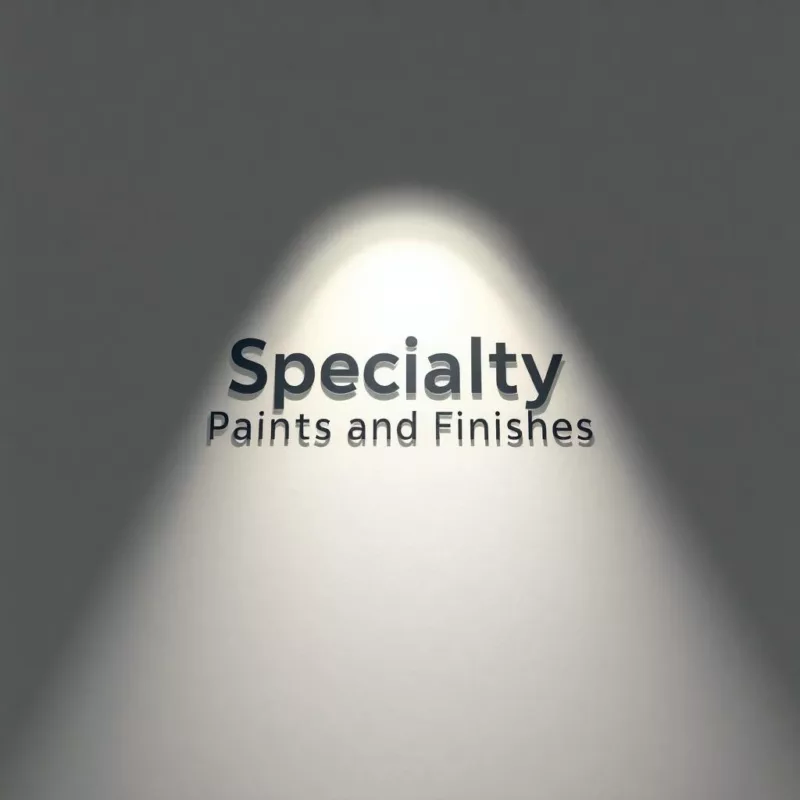
1. Metallic Paints
- Characteristics: Contain metal particles that create a reflective effect
- Application: Best applied over a smooth surface
- Effect: Luxurious, reflective finish
2. Textured Paints
- Characteristics: Contain aggregates like sand or silica
- Application: Applied with special rollers or trowels
- Effect: Three-dimensional texture
3. Faux Finishes
- Characteristics: Simulate materials like marble, wood, or stone
- Application: Requires special tools and techniques
- Effect: Mimics expensive materials at a fraction of the cost
Safety Considerations and Environmental Factors
Health and Safety During Painting
1. Ventilation
- Importance of proper air circulation
- Methods to ensure adequate ventilation
- Minimum ventilation time after painting
2. Personal Protective Equipment
- Respiratory protection: Masks and respirators
- Eye protection: Safety glasses
- Skin protection: Gloves, long sleeves
3. Handling and Storage of Paints
- Proper storage conditions
- Safe disposal of paint containers
- Dealing with spills and accidents
Environmental Considerations
1. VOCs and Their Impact
- Definition and sources of VOCs
- Health and environmental effects
- Regulations regarding VOC content in paints
2. Eco-Friendly Paint Options
- Zero-VOC paints
- Natural and mineral-based paints
- Recycled paint options
3. Sustainable Painting Practices
- Minimizing waste
- Proper disposal of leftover paint
- Extending paint life through proper storage
Paint Maintenance and Troubleshooting
Proper Paint Maintenance
1. Cleaning Painted Surfaces
- Appropriate cleaning methods by paint type
- Cleaning frequency recommendations
- Safe cleaning products for different finishes
2. Touch-Ups and Repairs
- Matching color for touch-ups
- Techniques for seamless repairs
- Storing leftover paint for future touch-ups
3. Extending Paint Lifespan
- Preventive measures against damage
- Protection from sun, humidity, and temperature changes
- Regular maintenance schedule
Common Paint Problems and Solutions
1. Adhesion Problems
- Peeling and Flaking:
- Causes: Poor surface preparation, humidity, incompatible layers
- Solutions: Proper scraping, sanding, priming before repainting
- Blistering:
- Causes: Painting over damp surfaces, heat, excessive humidity
- Solutions: Remove blisters, address moisture issues, repaint
2. Appearance Problems
- Uneven Color:
- Causes: Poor mixing, inconsistent application, varying porosity
- Solutions: Proper mixing, consistent application technique, appropriate primer
- Visible Brush or Roller Marks:
- Causes: Poor quality tools, improper technique, fast-drying paint
- Solutions: Use quality tools, proper technique, appropriate paint additives
3. Durability Problems
- Cracking and Crazing:
- Causes: Too thick application, poor flexibility, temperature changes
- Solutions: Proper application thickness, quality flexible paint
- Fading:
- Causes: Low-quality pigments, UV exposure, chemical exposure
- Solutions: UV-resistant paints, protective topcoats
Modern Trends in Home Paints
Technological Innovations
1. Smart Paints
- Heat-responsive paints that change color with temperature
- Conductive paints for electronic circuits
- Anti-bacterial and self-sterilizing paints
2. Nano Paints
- Self-cleaning properties
- Enhanced durability through nanoparticles
- Improved insulation properties
3. Multi-Functional Paints
- Sound-absorbing paints
- Air-purifying paints that capture pollutants
- Insulating paints that reduce energy consumption
Current Color and Finish Trends
1. Popular Color Palettes
- Natural and earth tones
- Muted and subdued colors
- Bold accent colors
2. Contemporary Finish Trends
- Mixing matte and gloss in the same space
- Color blocking techniques
- Textured and dimensional finishes
Conclusion
Selecting and applying home paints is both an art and a science that requires understanding various types of paints, their properties, and appropriate application techniques. The right choice of paint can transform spaces, protect surfaces, and create desired atmospheres in the home. By following proper preparation, application, and maintenance practices, homeowners can achieve professional-looking results and ensure the longevity of their paint jobs. As paint technology continues to advance, we can expect even more innovative products that combine aesthetics, functionality, and environmental sustainability.
References and Resources
Technical References
- Paint Industry Standards and Guidelines
- Scientific Research on Paint Composition and Performance
- International Building Codes for Paint Application
Consumer Resources
- Paint Manufacturer Websites and Guides
- Home Improvement Publications
- Online Color Selection Tools and Apps
Professional Organizations
- Painting and Decorating Contractors Associations
- Environmental Protection Agencies’ Guidelines on Paint
- Building Research Establishments
Art11deco



